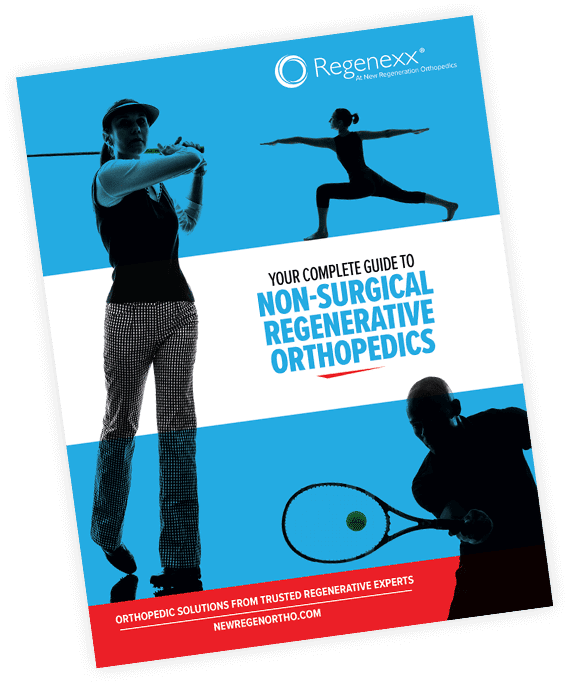Pickleball is a sport that is taking the world by storm. This sport is famous for being a low-barrier-to-entry way to work up a sweat, have friendly competition, and for just having down right FUN! The site usapickleball.org describes the basics off Pickleball in a short list:
- A fun sport that combines many elements of tennis, badminton and ping-pong.
- Played both indoors or outdoors on a badminton-sized court and a slightly modified tennis net.
- Played with a paddle and a plastic ball with holes.
- Played as doubles or singles.
- Can be enjoyed by all ages and skill levels
In our previous article on How To Prevent PickleBall Injuries, you can also read a bit about how the game’s inception and development began in 1965, and how it’s become the recreational and professional sensation it is today.
Since the game has basically “gone viral” in recent years, the number of Pickleball injuries we see is increasing all the time. Even YouTube is full of experts giving tips and tricks on techniques to prevent or recover from certain Pickleball injuries. While it’s usually all fun and games, pain or injury can really put a damper on your game. Read on for common Pickleball injuries and what to do about them.
*Note: These stretches are example recommendations, and you should always consult your physician before beginning any new fitness regimen.
3 Common Pickleball Injuries
Back Pain
In Pickleball, there are some unique aspects to the game that also can be correlated as culprits to low back pain: Dinking and The Kitchen.
Dinking is the act of softly, and strategically hitting the ball to make your opponent’s next move “unattackable.” This motion requires a lot of finesse and can potentially put a strain on the low back because it can be a low motion.
The Kitchen is described on paddletek.com as:
The seven-foot zone on each side of the net is known as the non-volley zone, more commonly referred to as ‘the kitchen’ of a pickleball court. Players are not permitted to volley while standing in it.
The Kitchen can contribute to low back pain because athletes might lean and stretch to prevent stepping into the non-volley zone, causing strain on the back.
A simple strategy to alleviate back pain is the Cobra Stretch.
Cobra Stretch
- Lie on your stomach with your hands next to your face.
- Push up with your arms and lift gradually your head then your upper back all the way to your lower back keeping the glutes relaxed and your pelvis against the ground.
- Push up until and hold for 5-10 seconds, lower yourself and repeat for 10 repetitions.
Elbow Tendonitis
If you’re sensing you have Tennis Elbow, or Pickleball Elbow rather, there may be certain movement techniques in the sport causing your pain. Since Tennis and Pickleball Elbow are usually referring to pain on the outside, or lateral, elbow there are certain motions inherent to the sport to blame. The muscles that attach on the outside of the elbow (the wrist and finger extensors) are overworked in wrist-intensive movements, like those in paddle/racquet sports. Some of the best strategies to avoid elbow pain from developing in Pickleball are based in technique. For example, thepickler.com has an elbow pain article, and suggests the following five technique tips:
- Hit the pickleball out in front of your body.
- Limit your backswing – in other words, take a short backswing.
- Move your feet to meet the pickleball at a controlled contact point.
- Swing from the shoulder, rather than from your wrist or elbow.
- Use a loose grip on your pickleball paddle.
If you’re already in elbow pain, here is an exercise to use as a strategy to help manage it.
Wrist Extensor Stretch
- With your elbow straight, bend the wrist and turn the hand slightly outward (pronation).
- Using your opposite hand, add a little pressure over the second knuckle and keep your fingers curled in your hand.
- Hold the stretch for 30 seconds and repeat three times.
Knee Tendonitis
Knee pain is a common joint that suffers in sports requiring forward, backward, and side-to-side motions. However, Pickleball is a sport with a modified court, designed for the whole family to enjoy (1). Part of the accessibility of the sport includes the smaller court size. The court that 20 ft. by 44 ft., and is comparatively much smaller than a tennis court (36 ft. by 78 ft).
Although the dimensions of the court and rules of the sport, make it easier on the knee joints, it is still possible the mechanics can result in achy knees. Our previous Pickleball article goes over a few stretches that are great for knees, but below is another strategy to help decrease your knee pain on the court.
Thigh Foam Rolling
- Place your foam roller on the floor.
- Lie on the roller on your stomach with the front of one thigh over the foam roller and the other leg on the floor for support.
- Roll the entire front of the thigh from the top of the hip to the top of the knee cap in an up and down motion.
- Maintain your abs tight to keep your low back from extending during the exercise.
- Roll for two minutes on each leg before and after play.
We’ve Got Your Back
If low back, elbow, or knee pain are interfering with your Pickleball game, visiting our physicians at Regenexx at New Regeneration Orthopedics of Florida is a great starting point. With us, you will get a comprehensive evaluation, and an honest recommendation of your best course of action. Our goal is to keep you out on the Pickleball court, pain free!
References:
- https://www.ncbi.nlm.nih.gov/pmc/articles/PMC6913863/
- physiotec.ca










